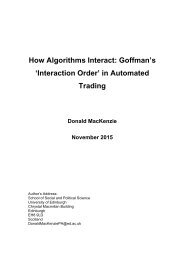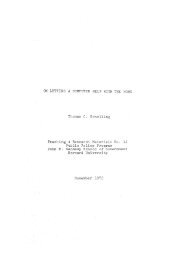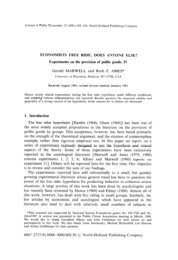n3-al-mukhatabat-journal
n3-al-mukhatabat-journal
n3-al-mukhatabat-journal
Create successful ePaper yourself
Turn your PDF publications into a flip-book with our unique Google optimized e-Paper software.
The Question of Domain Limits of Models<br />
In gener<strong>al</strong>, models are used in science to understand and represent different<br />
levels of scientific phenomena; from subatomic Quantum physics (the standard<br />
model), through cell and evolutionary biology, to human neurology and cognitive<br />
science. Hence, an essenti<strong>al</strong> question arises, is there a limit for the domain<br />
covered by a specific model, i.e., should models be limited within one specific<br />
scientific field, or one and the same model can be constructed in a way that<br />
covers completely different scientific fields.<br />
For example we use basic statistic<strong>al</strong> models (such as norm<strong>al</strong> or Gaussian<br />
distribution model, Bayesian theorem, etc) to represent random variables in<br />
physics (ex., Quantum Theory), in economics (ex. Stock market), as well as<br />
collective human behavior (ex. Poll surveys), which are completely different<br />
scientific fields. Similarly, we use chaotic non-linear systems models in<br />
completely different fields such as physics, biology, economics, sociology,<br />
computer science, etc.<br />
In addition, atomism as a gener<strong>al</strong> model has been used in a wide scope of<br />
essenti<strong>al</strong>ly different fields with 'theoretic<strong>al</strong>ly' different formulations: in physics<br />
(corpuscular theory of matter); in soci<strong>al</strong> sciences (methodologic<strong>al</strong> individu<strong>al</strong>ism);<br />
and in language (logic<strong>al</strong> atomism). In <strong>al</strong>l these manifestations of such a gener<strong>al</strong><br />
model a gener<strong>al</strong> form is preserved whereas specific theoretic<strong>al</strong> forms<br />
(mathematic<strong>al</strong>, qu<strong>al</strong>itative and logic<strong>al</strong>) are constructed.<br />
In these examples, such models apply to different fields of knowledge without<br />
reducing it to the physic<strong>al</strong> level. Humans obey statistic<strong>al</strong> laws as much as<br />
elementary particles, without being reduced to the physic<strong>al</strong> level.<br />
In the case of the gener<strong>al</strong> statistic<strong>al</strong> model, despite that both natur<strong>al</strong> and human<br />
'entities' follow the same 'statistic<strong>al</strong>' model the sense of the elements of the<br />
model differs in each. The statistic<strong>al</strong> elements in the case of the human level<br />
represent 'human decisions' or human behavior that is based on human<br />
decisions, whereas in the case of the physic<strong>al</strong> level, the statistic<strong>al</strong> elements<br />
represent physic<strong>al</strong> movements of elementary (or more complicated) particles.<br />
AL-MUKHATABAT Numéro 03 Année 01/2012 لىولأا ةن سلا 30 ددعلا تابطانا<br />
113<br />
ISSN: 1737-6432







